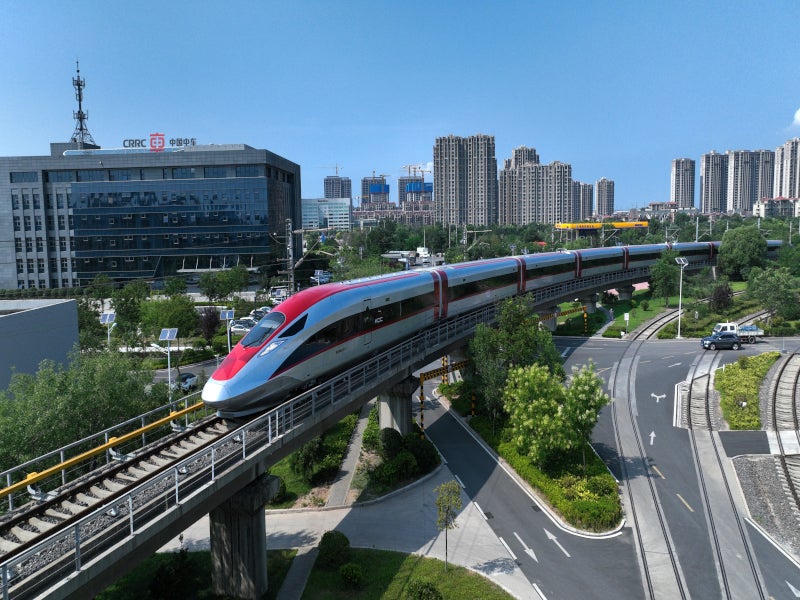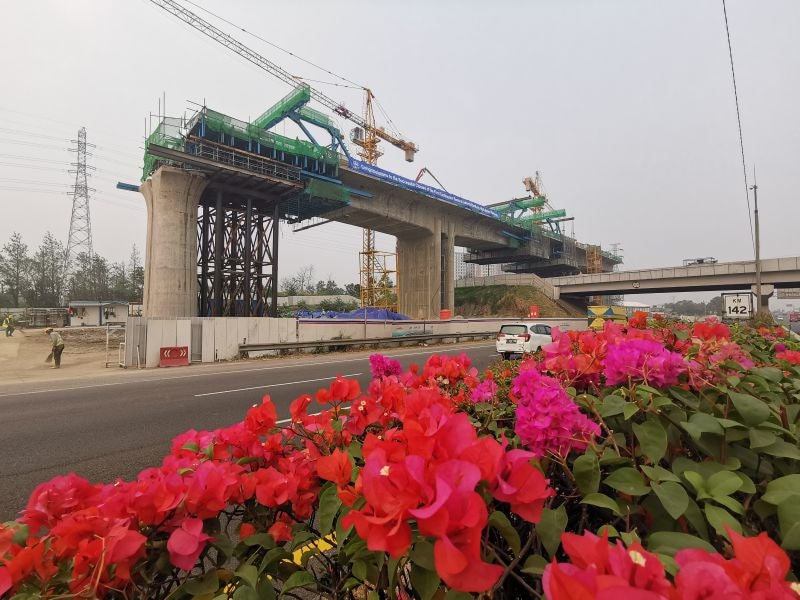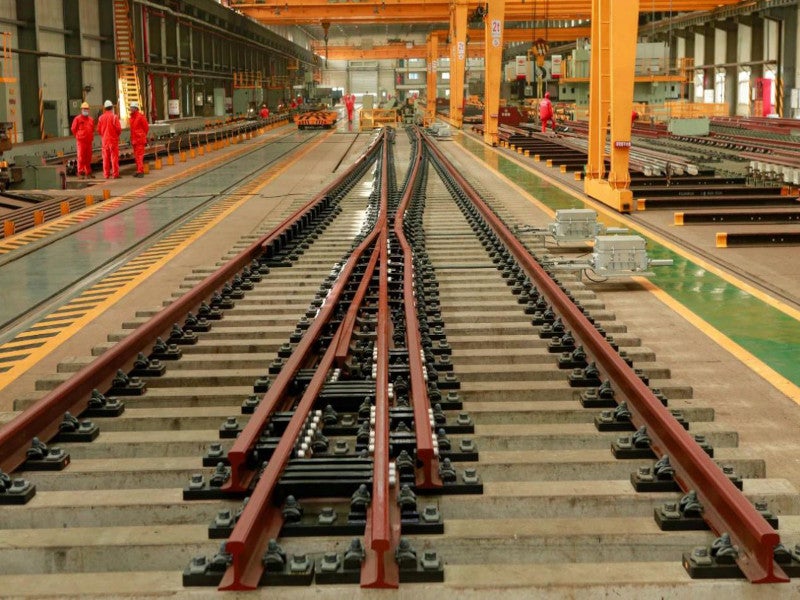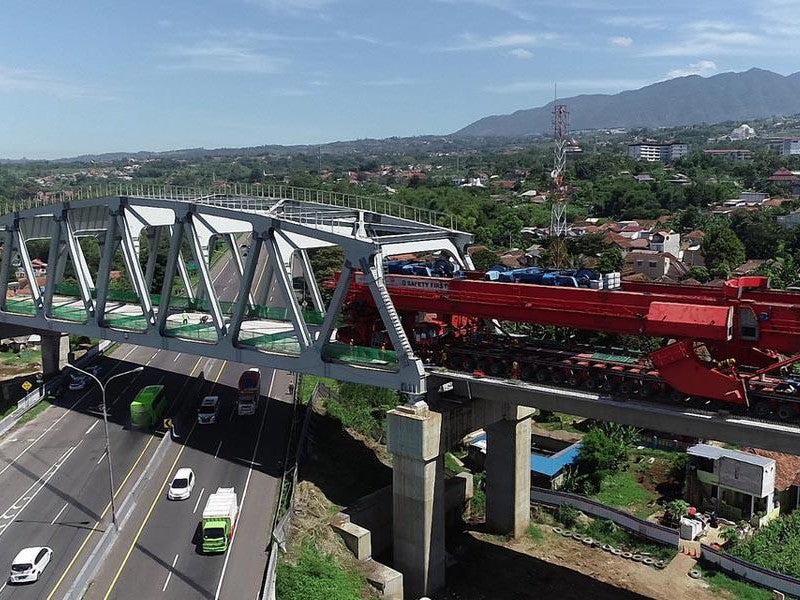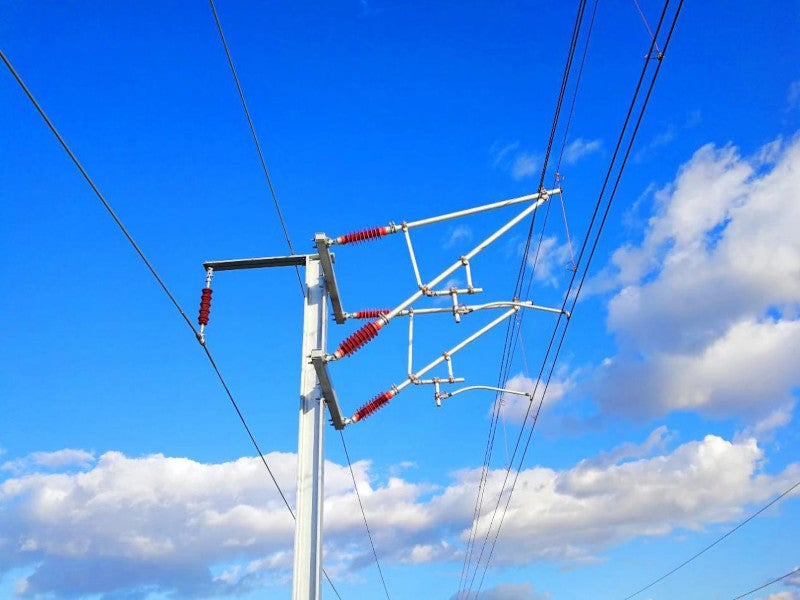Jakarta-Bandung will be the first high-speed railway project in Indonesia and Southeast Asia, with a track length of 142.3km and an operating speed of 350km/h.
China was selected by the Indonesian Government over Japan to build the fast-train rail link, which is estimated to cost $6.07bn.
The project is being developed by PT Kereta Cepat Indonesia China, a joint venture formed in October 2015 between a consortium of Indonesian state-owned companies, and China Railway International, a subsidiary of China Railway Group (CREC). The project is being carried out on a business-to-business basis, with Indonesia having a 60% interest in the joint venture while China has 40%.
Although construction began in 2016, completion was delayed due to the Covid-19 pandemic. Trial operations on the railway line are expected to be conducted in November 2022. The project is set to commence operations by June 2023.
The project is an important component of China’s Belt and Road Initiative.
Jakarta-Bandung high-speed rail project background
China won the project due to its readiness to provide guarantee-free loans while Japan requested Indonesian Government funding.
The high-profile railway contract was cancelled mid-way due to high costs and funding issues. Plans were changed to a medium-speed rail link that would be 40% cheaper.
Indonesian authorities then reverted the proposal to a high-speed rail link and awarded the contract to China.
Project details
The proposed rail link will be 142.3km long, with an approximate train speed estimated to be between 200km/h and 350km/h. The total length of the track being laid for the project is 279.4km, which includes 112.8km of ballasted track and 166.6km of ballastless track. The project requires at least 30,177 units of slab tracks to construct the track.
Daily passenger flow on the rail link is expected to be 44,000 on average, with this number increasing in later years.
Travel time between the two central hubs will be reduced to 36 minutes, from the original three to five hours.
More than 80km of the total length of the railway line will be elevated while the remaining will be through 13 tunnels and subgrades.
Electricity for the trains will be supplied by an Overhead Catenary System (OCS), installation of which began in June 2022.
Station details
The high-speed railway will have four stopping stations: Halim, Karawang, Padalarang, and Tegalluar, with one depot at Tegalluar. Each station will be connected to public transit routes.
One of the stations will be in Gambir, a major station located in the executive zone close to Monas and is expected to witness a huge passenger flow.
Manggarai will be another station location equipped to handle large number of passengers.
A station near the airport in Halim will connect the high-speed rail to a planned light rail and will provide easy access to the high-speed rail for passengers in south-eastern Jakarta.
Another station will be in Walini in West Bandung, which is to be a new tourism hub in West Java.
Construction details
The construction of the project’s elevated railway track requires more than 2,000 girder boxes. Installation of the girder boxes is 80% complete as of April 2022 and is expected to be fully completed by September 2022.
All 13 tunnels of the project were completed in June 2022. Tunnel 2 with a length of 1,052m was one of the most difficult projects due to the unstable soil structure. The completion of the Walini tunnel in May 2019 was an important milestone for the project.
Several temporary facilities, such as the batching plants and casting yards, have been established at various locations to help speed up the building process. Three casting yards were built in Cikarang, Karawang, and Kapo to manufacture the girder boxes.
As of August 2022, 90% of the civil works related to the construction of subgrade, bridges, and stations have been completed. The track laying process is being carried out in phases and is targeted to be completed by January 2023.
Rolling stock
The project will use CR400AF-type electric multiple units (EMUs), developed by CRRC Qingdao Sifang, a rolling stock manufacturer based in China. CRRC will provide 11 sets of eight-car EMUs for the project.
The design and shape of the trains is inspired by the Komodo dragon, which is an endemic animal to Indonesia. The interiors of the train feature traditional Indonesian Megamendung batik motifs. The trains will feature several classes such as VIP, first, and second class, in addition to dining car facilities, charging ports, facilities for the disabled, and luggage storage space.
In April 2022, manufacturing of all the 11 EMUs for the project was completed. The first high-speed EMU was unveiled in August 2022. Indonesia received the inaugural EMU train and a Comprehensive Inspection Train (CIT) or inspection train during the same month.
The inspection train is installed with equipment to detect track conditions, measure overhead electricity, inspect the communication and signalling systems, and wheel-rail dynamics. It can collect, process, and analyse data collected on the condition of the track in real time.
Signalling and communications systems
The project will utilise the CTSC-3 system, a Chinese train control system based on GSM-R wireless communication, to provide two-way communication between the train and the control centre. The GSM-R frequency planned to be used by the system is 900MHz.
The CTSC-3 system consists of three main components including onboard equipment, wayside equipment, and a centralised traffic control (CTC) centre at Tegalluar. The equipment will feature Radio Block Center (RBC) technology to generate movement authority (MA), track circuits to check train occupation, and Balise to inform train positions.
The project will include a dispatching monitoring centre, threat detection sensors, and a disaster monitoring terminal at Tegalluar and CCTV installed along the route, which will be supported by GSM-R communication technology.
A foreign object protection system with six sensory devices will be installed in every overpass, along with seven sensors to detect earthquake threats for up to 25km, eight sensors set 20km apart to detect threats from rain, and 17 sensors to detect threats from strong winds.
A lightning protection system (LPS) in the form of lightning wire will be installed to protect the OCS.
Financing for the rail project
The project is financed through a Chinese loan, without aid from the Indonesian State budget. The China Development Bank is providing approximately 75% of the funding, and the rest is being arranged by the joint venture partners.
The loan will be for a 40-year period, with a ten-year grace period.
In August 2022, the Indonesian government announced funding of $274m to railway operator PT Kereta Api Indonesia (PT KAI) to hasten the development of the project.
Key players involved
China Railway Construction Corp (CRCC) entered a joint venture with a consortium of Indonesia’s state-owned enterprises (SOEs) led by PT Wijaya Karya Tbk to develop the high-speed rail project.
The Indonesian consortium comprises construction company PT Wijaya Karya, PT KAI, toll-road builder PT Jasa Marga, and plantation company PT Perkebunan Nusantara VIII.
CREC is the main contractor for the construction of the project.
A number of Chinese state-owned enterprises are part of the project including Sinohydro Bureau 8, Power Construction Corporation China, China TieSiJu Civil Engineering Group (CTCE), China Railway No. 4 Engineering Group, China Railway No.3 Engineering Group, China Railway Electrification Engineering Group, China Railway Shanhaiguan Bridge Group, and China Railway Hi-Tech Industry.
Keller Franki Indonesia, a subsidiary of geotechnical design and construction services provider Keller Group, installed bored piles to support foundations for the project.
Benefits of Jakarta to Bandung high-speed rail
The project is expected to generate 40,000 jobs a year during construction, creating a positive economic impact.
Associated industries such as smelting, manufacturing, infrastructure, power generation, electronics, services, and logistics will also receive a boost, thus leading to balanced growth in all sectors.
Stations and their surrounding areas will experience an increase in activity and development, which will result in new opportunities for the real estate sector. Urban and rural areas along the route will also experience balanced development.

